The 15 Best Horror Movies of 2017 (So Far)

So far, the best horror movies of 2017 have cut a wide chasm between extremes—between films that explore the limits of obscenity and the quietest of character musings, between well-tuned homages to old-fashioned thrillers and those that feel completely, breathlessly new. And yes, some of us have weathered Flying Lotus’s Kuso —if “weather” is even the right word to use in this case.
Now in August, it’s clear that, however much we have and have yet to lament, 2017 is yielding plenty of great—maybe classic—films in a genre (or genre inherently open to a mash-up of genres) typically friendlier than most to giving a voice (and budget) to underrepresented filmmakers toiling at the fringes of the industry. In other words: Horror movie-making is important, now more than ever:
Here are the best horror movies of 2017 so far.
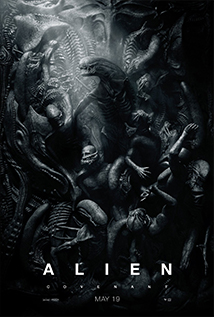 15. Alien: Covenant
15. Alien: Covenant
Director: Ridley Scott
Alien: Covenant starts out mostly swimmingly as Scott guides his characters and the crowd into his film’s visual abattoir: The sheer volume of blood spilled here, CGI or not, can’t be overstated, so let’s be clear that Alien: Covenant isn’t for the faint of heart (though the faint of heart probably aren’t lining up to see this sucker anyways). Put as vaguely as possible to avoid spoiling its gruesome pleasures, let’s just say that things go into things, and that things come out of things, and also that these things are things that should neither go into nor come out of other things. This is precisely the draw of Alien movies from a visceral standpoint, of course, and as long as Scott melds paranoiac body horror and gun-toting action without drawing attention to backstory, the film works. It even has subtext. (You think you know someone until they unexpectedly vomit bile in your face. If that’s not a metaphor for modern political dialogue, then what is?) —Andy Crump
 14. The Girl With All the Gifts
14. The Girl With All the Gifts
Director: Colm McCarthy
M.R. Carey’s novel The Girl With All the Gifts plays coy with its zombie (or “hungries,” as they’re called here) trappings, drawing readers in for dozens of pages before revealing its flesh-eating premise. The film adaptation, released last year in the U.K. before making its U.S. debut in February, bares its teeth right away. If viewers aren’t burnt out on zombie offerings (and they shouldn’t be, with such recent standouts as 2016’s Korean hit Train to Busan proving that the genre has plenty of life left in it), they’ll find that The Girl With All the Gifts is less concerned with the initial overwhelming outbreak than with the moral lines survivors in the military and scientific community are willing to cross. Director Colm McCarthy, working from a screenplay by Carey himself, doesn’t skimp on the swarming carnage, often rendering attacks in brutal, fully lit scenes, but the most frightening tension comes from a menacing, single-minded Glenn Close as a scientist with few scruples. Young actress Sennia Nanua as Melanie, the “hungry” most in control of her impulses, gives the crowded zombie genre one of its only truly heroic performances, enshrining The Girl With All the Gifts as the bloody heir to George Romero’s misunderstood-at-the-time classic Day of the Dead. —Steve Foxe
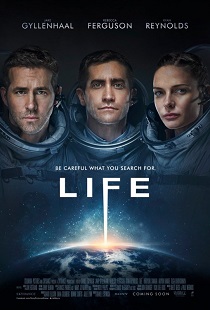 13. Life
13. Life
Director: Daniel Espinosa
Suppose you’re in Space. Go ahead, suppose it. Now suppose you’re on a Spacewalk, nothing between you and the infinite but a braided steel tether and the best Spacesuit human minds could fathom. Then something goes wrong. Your helmet starts filling up with liquid and you don’t know why. In Space, the liquid is everywhere, floating in your eyes, blinding you. This actually happened to astronauts Chris Hadfield and Luca Parmitano, when emergency suit leaks almost caused disaster. They didn’t panic—but they’re not us. Life, a gripping space station horror movie somewhere between The Martian, Alien and Event Horizon, uses this scientific unfamiliarity to its terrifying advantage. There’s already so much extra to consider in Space, so much outside the layman’s understanding, that there’s also so much extra to fear. We’re afraid of things we can’t quite grasp, and in Space we’re sure of so little that, when done well, weightless—metaphorically and literally—events can feel like lead in our stomachs. And Life nails the fundamentals of that fear.
It’s also just a generally beautiful movie whose visuals embrace both the wonders of technology and the intensity of isolation—not by, like Alfonso Cuarón does in Gravity, opening up to the cold loneliness of space, but instead by countering gorgeously rendered ISS shots with an Earthly backdrop. Daniel Espinosa emphasizes the responsibility placed on the space station by all of us here on the ground. Those astronauts are the best of us and, dammit, they’re not going to let us down. —Jacob Oller / Full Review
 12. The Void
12. The Void
Directors: Steven Kostanski, Jeremy Gillespie
Viewers should grade writer-directors Steven Kostanski and Jeremy Gillespie’s The Void on a curve: While the low-budget Canadian production earns an “A” for ambition, its mélange of The Thing-inspired body horror, ‘80s nostalgia and Lovecraftian cosmic terror doesn’t quite cohere into a satisfying whole by the time its chief antagonist peels away his skin to reveal a bodysuit that looks like Mighty Morphin Power Rangers’ Lord Zedd. The first half of the film demonstrates much more restraint, building tension as triangle-branded cultists isolate a mismatched group of (mostly) innocent people—led by Aaron Poole as an out-of-his-depth small-town cop—in a (mostly) vacant hospital. Kotanski and Gillespie build in too many potentially conflicting twists—who, exactly, is impregnated with what?—but the grotesque practical effects and descent-into-Hell structure at times pass for a solid Silent Hill adaptation. Some of horror’s most recent, popularly memorable features (say: It Follows, The Babadook) have wisely employed relatively narrow scopes. Instead, The Void attempts to push audiences into another dimension, but manages at least a few successful frights along the way. —Steve Foxe
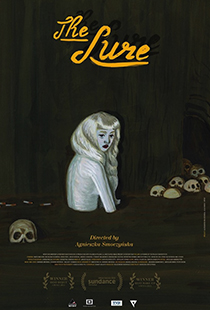 11. The Lure
11. The Lure
Director: Agnieszka Smoczynska
In Filmmaker Magazine, director Agnieszka Smoczynska called The Lure a “coming-of-age story” born of her past as the child of a nightclub owner: “I grew up breathing this atmosphere.” What she means to say, I’m guessing, is that The Lure is an even more restlessly plotted Boyhood if the Texan movie rebooted The Little Mermaid as a murderous synth-rock opera. (OK, maybe it’s nothing like Boyhood.) Smoczynska’s film resurrects prototypical fairy tale romance and fantasy without any of the false notes associated with Hollywood’s “gritty” reboot culture. Poland, the 1980s and the development of its leading young women provide a multi-genre milieu in which the film’s cannibalistic mermaids can sing their sultry, often violently funny siren songs to their dark hearts’re content. While Ariel the mermaid Disney princess finds empathy with young girls who watch her struggle with feelings of longing and entrapment, The Lure’s flesh-hungry, viscous, scaly fish-people are a gross, haptic and ultimately effective metaphor for the maturation of this same audience. In the water, the pair are innocent to the ways of humans (adults), but on land develop slimes and odors unfamiliar to themselves and odd (yet strangely attractive) to their new companions. Reckoning with bodily change, especially when shoved into the sex industry like many immigrants to Poland during the collapse of that country’s communist regime in the late ’80s, the film combines the politics of the time with the sexual politics of a girl becoming a woman (of having her body politicized). And though The Lure may bite off more human neck than it can chew, especially during its music-less plot wanderings, it’s just so wonderfully consistent in its oddball vision you won’t be able to help but be drawn in by its mesmerizing thrall. —Jacob Oller / Full Review
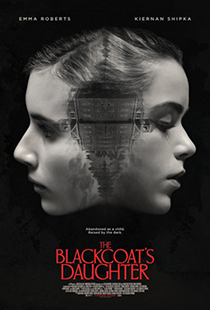 10. The Blackcoat’s Daughter
10. The Blackcoat’s Daughter
Director: Osgood Perkins
Looking at his first two horror features, it becomes clear that director Osgood Perkins seems to have a distinct distaste for both plot and film convention. His films defy easy description, as anyone who watched I Am the Pretty Thing That Lives in the House on Netflix could attest. The Blackcoat’s Daughter, meanwhile, was completed and exhibited as early as 2015 under the title February, but has been floating around in limbo ever since until A24 decided to finally give it a limited release this spring. Compared with Pretty Thing, Blackcoat’s Daughter is at least easier to grasp and marginally brisker, which makes it more effective overall. Perkins’ style is languid, atmospheric and deliberate, favoring repetition and a slowly multiplying sense of unease and impending doom. The story follows two high school-aged students who are both left relatively alone at their uptight Catholic boarding school over break when their parents fail to pick them up. As one descends into what is implied to be either madness or demonic possession, the events are interwoven with another story about a young woman journeying on the road in the direction of the boarding school. The two stories inevitably intertwine. The film’s pace sometimes leaves something to be desired, but patience is largely repaid by its final third, which contains several moments genuinely disturbing in their violence and transgressive imagery. In the end, The Blackcoat’s Daughter comes together significantly more neatly and logically than one might consider while watching its first hour, rewarding careful attention to detail throughout. —Jim Vorel
-

-

-

-

-

-

-

-

-

-

-

-

-

-

-

-

-

-

-

-

-

-

-

-

-

-

-

-

-

-

-

-

-

-

-

-

-

-

-

-

 9. Split
9. Split 8. The Transfiguration
8. The Transfiguration 7. We Are the Flesh
7. We Are the Flesh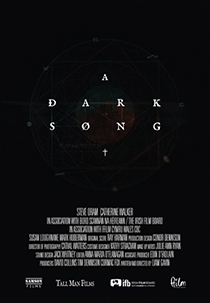 6. A Dark Song
6. A Dark Song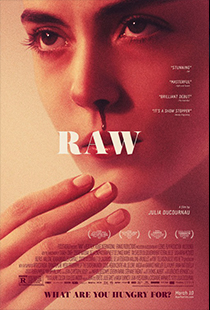 5. Raw
5. Raw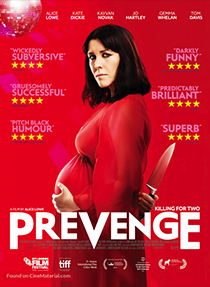 4. Prevenge
4. Prevenge 3. It Comes at Night
3. It Comes at Night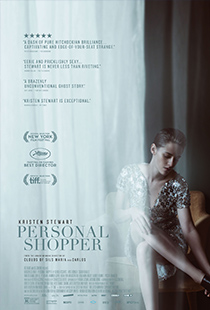 2. Personal Shopper
2. Personal Shopper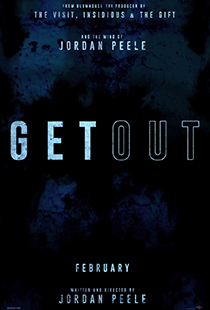 1. Get Out
1. Get Out






































